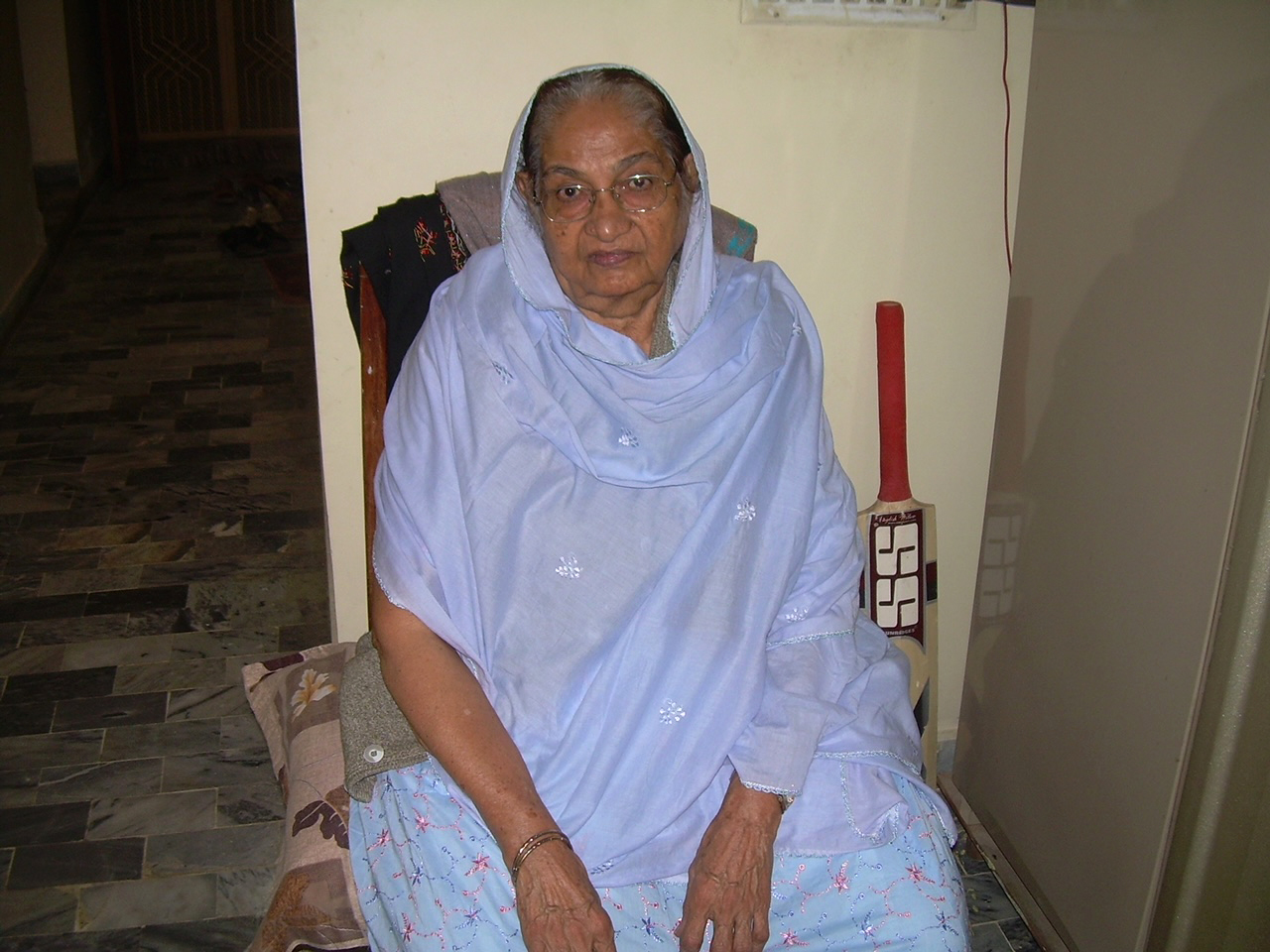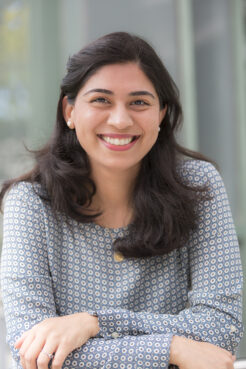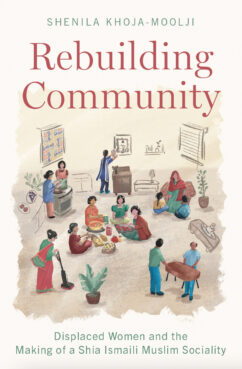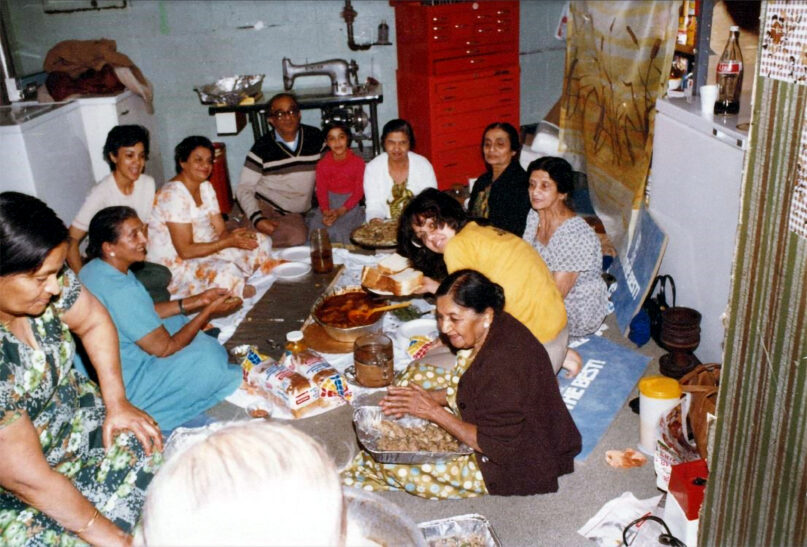(RNS) — In 1971, Shenila Khoja-Moolji’s grandmother was a widow and mother of five working in a restaurant in East Pakistan (now Bangladesh) when civil war forced her to flee more than 1,000 miles west to what was then West Pakistan.
When she and her children arrived in Karachi, the Shia Ismaili community there gave them food and clothing, subsidized the family’s rent and helped enroll Khoja-Moolji’s mother in an Ismaili-run boarding school.
“We often don’t read about women like my grandmother, a working-class Muslim who spent most of her life as a domestic aide and was always on the brink of falling deeper into poverty,” Khoja-Moolji, a professor of Muslim societies at Georgetown University, told Religion News Service in a recent phone interview.
“The histories of women like my grandmother and the women who helped her, they’re not really archived in national or religious history. It was this loss of women’s histories and their community-building efforts that motivated me to write this book.”

Shakar Juma, author Shenila Khoja-Moolji’s grandmother, who was repeatedly displaced between 1930 and 1971. Photo courtesy Khoja-Moolji
About six years ago, after interviewing her grandmother about her past, Khoja-Moolji talked to other Shia Nizari Ismaili Muslims — a minority within the Shia Muslim minority — who had fled East Pakistan, as well as others who left East Africa, all ending up in North America in the 1970s.
Khoja-Moolji noticed how these displaced women reconstructed jamat, or community, through everyday tasks such as cooking biryani, mopping the floor of jamatkhanas (Ismaili places of worship) or changing diapers. “In this book, we learn about how religion in a way provides a code of conduct for communities to suture their lives back together,” said Khoja-Moolji.
RNS spoke to Khoja-Moolji about her new book, “Rebuilding Community: Displaced Women and the Making of a Shia Ismaili Muslim Sociality,” forthcoming from Oxford University Press. This interview has been edited for length and clarity.
How do you separate your work as a scholar from your deeply personal ties to these women?

Shenila Khoja-Moolji. Courtesy photo
I am writing from a tradition in which the scholar is part of the writing experience, and where knowledge about one’s community enhances one’s interpretation. I have a section in which I call this a faithful witnessing, a phrase I borrow from feminist philosopher Maria Lugones. I’m trying to enter the experiences of my subjects as their companion on this journey, as their kin, rather than this disembodied voice of a rational outside observer.
You write about how seemingly mundane tasks helped to build religious community in the Ismaili diaspora. What’s an example?
A woman called Sakarkhanu Hassanali Bandali used to cook for congregants in Dar es Salaam. When she had to flee to Toronto, she was called upon to cook for the early congregation there. She brought the recipe book she used in Dar to Toronto. So there was a tangible connection that this mundane practice of cooking forges across oceans.
Many migrant women have written cookbooks, and these are often some of the earliest texts that were penned by Ismaili women. But we often think about this work as feminized, and so they haven’t been scrutinized as historical texts. I use them to understand how certain foods are transmitting the history of diasporic encounters. Recipes for kuku-paka for example, remind you of how Ismaili women of the past melded Indian spices with locally plentiful coconut. In every cookbook that I studied, we find recipes of seero, which is also distributed as a ritual food. These are everyday practices through which women are passing on the sensory inheritance to the next generation.
What is “seva” and how is that word used to describe the care practices undertaken by Ismaili women?
Many of my interlocutors described these everyday community-building activities as “seva.” Seva, which is a Sanskrit term, is used by Ismailis of South Asian origins to express devotion and service to a supreme being. Contemporary Ismailis, for example, will use this term to denote service to the Imam, or spiritual leader, as well as to individuals and institutions within the Ismaili community and beyond. And so seva is a way in which Ismailis broadly understand ethical conduct, and it is also a spiritual practice. And it has a dimension of enhancing relationality and building the community.
Doing this work is also understood sometimes as an opportunity given by the Imam, because ultimately when you are doing this service for other people, you develop your virtue in the process.

“Rebuilding Community: Displaced Women and the Making of a Shia Ismaili Muslim Sociality” by Shenila Khoja-Moolji. Courtesy image
Why did you include an interlude with testimonies from those who fled East Pakistan or East Africa?
Because of my focus on the rebuilding part of their lives, I’ve never asked my interlocutors very directly about what happened during the moments when they were fleeing. These are traumatic moments, and so in part, I didn’t want them to relive it. But many of them voluntarily shared some of the trauma they experienced. One woman who was a teenager at the time saw somebody get killed from her balcony and then saw another person get killed at the airport. There was a woman who dressed up as a bride and hid so that if she was caught, she would say she was the bride of an army officer.
I wanted my readers to understand that all of this rebuilding and community-making flows beside this trauma and dysfunction.
Can you talk about the complex relationship between Ismaili communities in East Africa and British settler colonialism?
The British segregated Black and Asian people through multiple policies. They could not go to the same schools, live in the same neighborhoods, be in the same trade. Asian anti-Blackness was not incidental, but a critical component of colonialism, because it ensured that the colonized would see each other as competition.
But also there are stories where Ismaili ancestors try to transcend some of these constraints. In the book, you see evidence of how Black people and Asians established affinities when they participated in anti-apartheid struggles in South Africa. If we understand some of these larger dynamics, we can also locate these fleeting, tentative examples of how Ismailis also transcended some of these colonial structural constraints.
What was your experience with food in the wake of your nani’s passing, and what did it teach you about how food can act as an archive?
I was writing the book around the time she passed, and I started to eat bhel puri, a dish that I used to make with her during summer vacations at her home. It wasn’t something I was intending to do. But I think as I returned to the chapter, I also felt this was one of the ways in which I tried to reconnect to my grandmother. I began thinking about how food tells us about women’s labor but also can allow us to remember ancestors and animate them in the present.
What impact has writing this book had on you?
I have experienced the writing of this book as a privilege. I was able to meet with 90 Ismaili Muslim men and women. It was a sheer joy to learn about their lives, their challenges, but also how they tried to enact their understanding of their faith in everyday life. I learned how their faith in their Imam and in their own selves and in their jamats kept them afloat in really difficult circumstances. It has also been a spiritually transformative experience for me.
This story has been updated.





